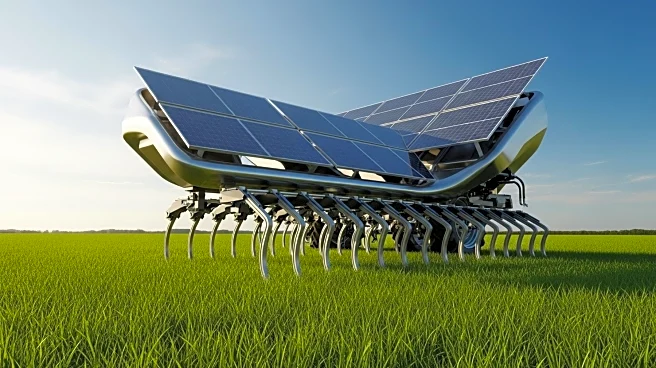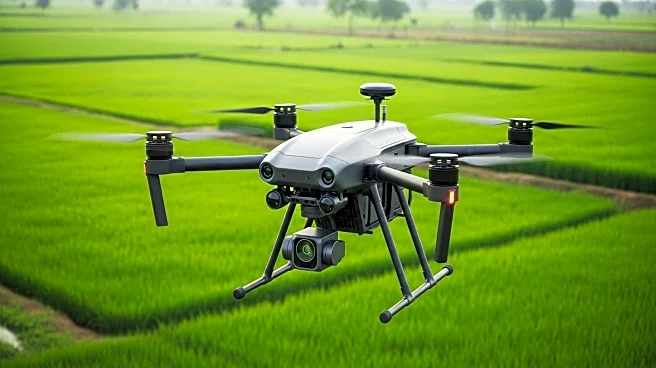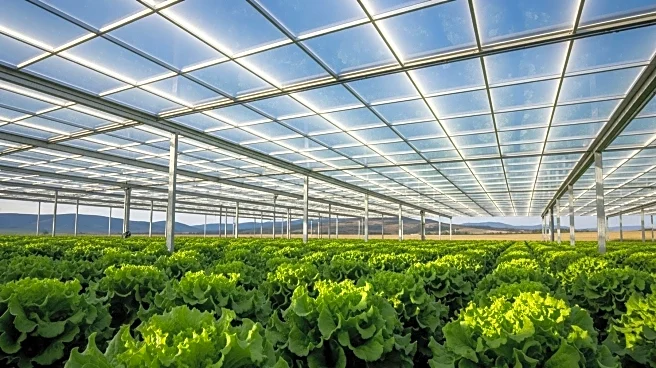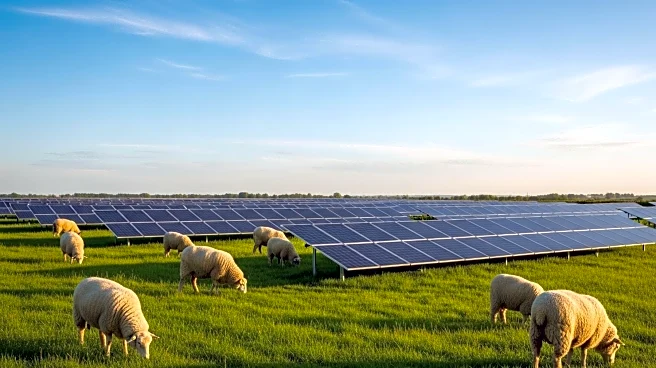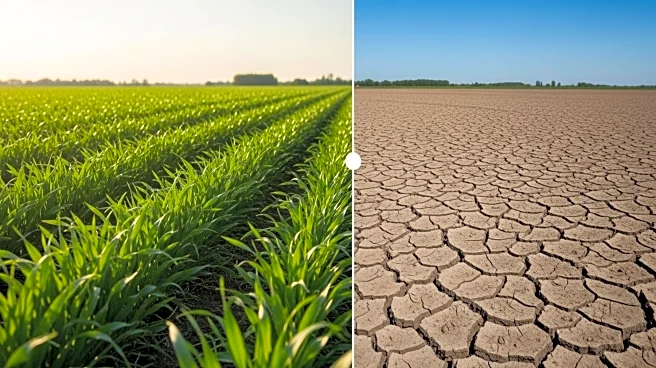What's Happening?
Researchers from Technische Hochschule Ingolstadt in Germany have developed a crop selection tool to optimize agrivoltaics projects, which combine agriculture with solar energy. The tool analyzes how 12 different staple crops respond to climatic changes, shading, and water requirements, using data from nearly 20 research studies. This innovation aims to improve food security and energy efficiency by identifying the best crops for agrivoltaic systems, which are ideal for small-scale farming communities.
Why It's Important?
Agrivoltaics represent a sustainable approach to farming that maximizes land use by integrating solar energy production with agriculture. The crop selection tool enhances the viability of agrivoltaics by ensuring that crops are chosen based on their compatibility with solar energy zones. This not only boosts agricultural yields but also provides farmers with additional income from selling excess energy. The tool's development is a significant step towards more sustainable and profitable farming practices.
What's Next?
Future research will focus on AI-driven optimization techniques and real-world pilot studies to refine agrivoltaic deployment. The goal is to enhance decision-making processes and improve the efficiency of agrivoltaic systems. As interest in sustainable agriculture grows, the adoption of agrivoltaics is expected to increase, offering new opportunities for rural development and decentralized renewable energy projects.
Beyond the Headlines
The advancement of agrivoltaics highlights the potential for innovative technologies to address global challenges such as food security and climate change. By optimizing land use and energy production, agrivoltaics offer a model for sustainable development that benefits both the environment and local communities. The integration of AI and advanced agronomic assessments will further enhance the effectiveness of these systems, paving the way for a more resilient agricultural sector.

